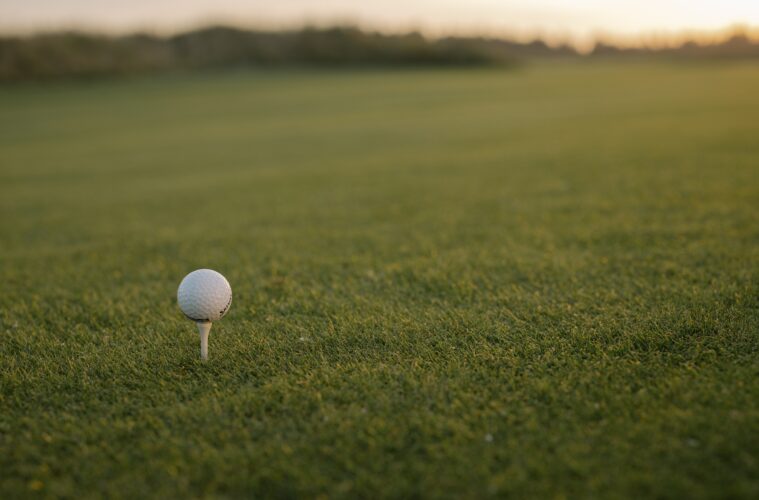If you want to take up golf, whether it’s as a hobby or on a more competitive level, then the first and possibly most important, thing that you should focus on practicing and perfecting is how to grip the golf club.
You won’t be able to do anything else on the course until you’ve learned this particular skill, a good grip is your gateway into being a competent golfer and it’s worth making sure you have it somewhat mastered before you try anything more specific.

The importance of this fundamental skill cannot be understated, and while it is just the first of many steps to excelling on the golf course, that doesn’t mean that it’s going to be an easy one for you.
Especially if you’ve never picked up a golf club before, it’s not going to feel natural in your hand and with there being so much to think about to pull off something so simple, it can get pretty frustrating.
So here’s a few things that you should keep in mind:
Find the Right Size
Most clubs will have a standard-sized grip when you buy them, and the size is standard for a reason. It will usually be agreeable for most people and will allow them to grip it with relative ease.
But it might not be the right size for you. All of us have different sized hands and our height and posture will factor into this too, and it’s not a problem because you can buy new grips and regrip the club yourself.
The only way to find out if this is the case is through practice. You will know if it’s the grip that’s the problem if you find that you are consistently pulling or slicing despite altering and improving the way you hold. When you’re seeking out this new grip, the most reliable place for you to buy would be Lamkin Golf Grips. Not only do they have a vast collection of different kinds of grips for all different purposes, but they have a variety of services on their site which can help aid your choice. You can use their grip guide to help you navigate through all of the choices, and to focus in on what’s specifically important to you for the type of golfer that you are. You can learn about the four basic grip sizes:
There’s undersize, standard, midsize and oversize and you can determine which one works best for you. Then you can also look into the idea of grip firmness. Typically a much firmer grip is better suited to one with a high speed swing and they also aid stability. While softer grips work very well for those who are lacking somewhat in hand strength. There’s also the material to think about. Lamkin offers primarily synthetic or rubber grips which offer a few additional benefits over other materials. You can expect a significant dampening of vibrations and long-lasting tackiness. Surface texture is another factor which is informed by the type of material as well as the specific design or pattern inlaid on said material. The preferred type will depend on the player. The pattern will be either smooth or it will be coarse and abrasive, so you think about which one would feel more comfortable in your hand and not inhibit your performance.
Whether or not you like wearing gloves will be a thing to consider when thinking about the surface texture too. If you don’t, you will probably be more comfortable with a grip that is a bit smoother. If you think you’ll be spending a lot of time playing in wet or humid weather, you should consider a grip that has cord fabric, because that’s helpful for ensuring that you have traction and support in those undesirable conditions.

Work on Your Top Hand Position
So onto the actual act of gripping and where you position your hands is of paramount importance. Each of your hands will serve a different function for a strong and reliable grip so think about each one separately.
Your top hand, being the one closer to the top of the club and usually the less dominant hand, is effectively like an anchor. Start by resting the lower part of the club on the ground so that you can grab the top of it. Wrap your hand around so that your index finger is touching your palm just below the base of your thumb. The grip is mainly coming from the pinky and ring finger with the other three mainly there for support.
With this in mind, a good way to test whether or not your grip is correct, is to cock your wrist back so that the club is pointing upwards. If you can do this fully, then your top hand grip is right.
And Bottom Hand Position
Your bottom hand is the one that’s going to be doing most of the work. To start working that into the correct position, you need to get into a kind of a ‘V’ shape, with all of your fingers together and your thumb pointing up.
Place this hand so that the crook of the V is resting against the thumb of your top hand and then wrap your fingers around. The index finger of the bottom hand is the main pressure point to think about here. It should be resting firmly against the grip and your middle and ring fingers should barely be touching it. How your two hands interact with each other from this point will differ from person to person.
You can either overlap your fingers, interlock them or aim for the baseball grip which the fingers on both hands are touching but against each other instead of intertwined or on top. Try each of these and see which works for you.
Experiment With Pressure
Pressure when gripping a golf club is a little bit of a slippery slope. Gripping it too tightly will cause your shots to be stiff and will inhibit your aim and fluidity, whereas a close grip will just result in your losing control. The hold needs to be firm, and it’s easy enough to tell when your grip is loose because you will feel like you are lacking in control, it’s not so easy to tell if you’re holding on too tight however, and that requires more thought.
How you can figure it out is by doing a few practice swings. When you hit the ball, if you can feel your forearms start to tense, you know that you have too tight of a grip and need to relax. Try this a few times, adding or decreasing pressure depending on how your forearms react.
You should find the happy medium before too long with this method.
Replace Clubs When Necessary
Golf clubs won’t last forever, especially if you are going to be using them regularly. They will gradually start to wear down and become less functional, and I know the temptation to keep using them is strong because they can be expensive, but you have to replace them.What will end up happening is that first of all, your performance will be inhibited because your club is no longer up to the task of effective putting and driving, and you will also start to get accustomed to the shoddy club.
Your grip will have to change to accomodate a club that’s no longer up to the task of good playing, and then when you do eventually get new ones you will have to relearn your grip all over again. So don’t wait to replace your clubs if they start showing signs of decreased functionality.
DO NOT Stop Practicing
One of the worst things that you can do as a golfer (and really, the same applies to any kind of sport) is to get complacent. To assume that once your grip has started to work for you, that you don’t need to practice anymore. This is not the case. It’s like a muscle, if you don’t work it, then it will start to wear away. You could work hard on everything else and neglect grip and then all of a sudden you’ve lost one of the fundamentals.
So make sure that you always make some time for dedicated grip practice. It’s a simple enough thing to set up for yourself at home so try to do some practice a couple of times a week.
Your grip obviously isn’t the only thing you have to learn, but if you put the time and effort into perfecting your grip then you will set yourself up very well for the more advanced stuff.


